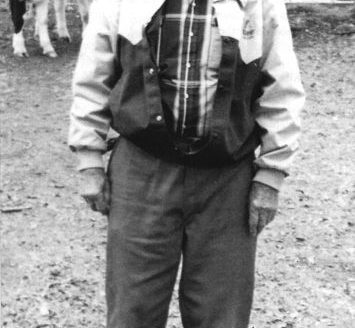When disaster strikes the farm
Life is good when wheat harvest finishes up without any breakdowns or major calamities, but in an instant, a tornado can roll through a small town and destroy every structure, field or person in sight. It is in these times that disaster planning and coping come into play.
“Farming is an intensely and inherently stressful profession and a huge part of life on the farm is learning to cope with the things that are simply out of our control,” said Kami Gallus, Oklahoma State University professor of human development and family science. “I think that’s where words like disaster, crisis and stress, quickly and all too frequently enter into life on the farm.”
According to Gallus, a disaster can be defined as an event on the farm that occurs, in most cases, suddenly and unexpectedly causing severe disturbance to people or objects affected by it and resulting in a loss of life, harm to the health of the population, the destruction and loss of community property and severe damage to the environment. For many, hearing the word disaster brings to mind the common natural disasters that challenge agricultural production like drought, tornadoes and floods. The Salvation Army estimates natural disasters cause $24.4 billion in losses each year. For others, thoughts of human-made disasters come to mind, such as hazardous materials or transportation accidents, fires, terrorist attacks or the most recent COVID-19 pandemic.
“Overall, the term defines the many events that we have little to no control over, yet deeply and drastically impact our lives,” Gallus said. “For many farmers, life on the farm is defined by the ongoing, overwhelming fear of financial disaster that often follows years of hardship brought on by ongoing natural and or human-made disasters. These disasters have resulted in loss of harvest or livestock, increases susceptibility to disease and the destruction of irrigation systems or other agricultural infrastructure.”
Gallus said over time, the culmination of numerous disasters threatens the ultimate farm disaster: a foreclosure notice, a farm auction or even bankruptcy. Many farmers feel overwhelmed by the lingering stress of financial disaster. In fact, Gallus said some research suggests farming is consistently among the top 10 most stressful and dangerous occupations.
Coping with a disaster on the farm
Although farming communities are known for their resilience, disaster survivors may show physical, emotional and or mental signs of stress. Gallus said, while not comfortable, stress and grief are common in uncommon circumstances of disaster. Sadness, grief and anger are just some of those common experiences and emotions.
“We also know that disaster can have a ripple effect, so reactions may not only occur to the individual directly impacted, we also know they are going to have an indirect effect on those that are repeatedly exposed to the event through coverage with the media or just through their natural relationships,” Gallus said. “Still, we know that most people effected by disaster have natural resilience to support themselves in recovery. In fact, research shows that most survivors will recover to a former functioning level within six to 18 months following the disaster and that’s even without outside mental health intervention.”
A primary task of helping people following trauma and disaster is simply assisting with access to support systems and developing positive coping skills to diminish adverse reactions and disruptions in daily living that may be caused by the disaster. Gallus said research demonstrates that unlike some other traumatic events, such as abuse, which is often more isolating in nature, people tend to pull together during a disaster and that positive interpersonal response to disaster is highly associated with individual post-disaster strength. When family member, friends, neighbors and communities join together, everyone is made stronger.
However, with all the work farmers do to implement water or land management strategies, maintain vaccination and purchase records for their livestock all to mitigate risks, they are not always as good at preparing themselves or their families for a disaster.
“We used to think that after a crisis or disaster they needed to debrief or talk about all the major details of the event they had gone through, but research after 9/11 has challenged much of our thinking and introduced a new perspective on dealing with grief, loss and trauma,” Gallus said. “We know that most people are going to recover from a major crisis and disaster on their own and they don’t need professional help. In fact, our research suggests that forcing people to debrief and talk about it may actually hurt them.”
So rather than focusing on debriefing, Gallus suggests that intervention and prevention efforts during the early and mid-term stages of disaster should focus on promoting five things: a sense of safety, calming, a sense of self and community efficacy, connectiveness and hope. Psychological first aid is an approach to helping people following a disaster that is based on these five principles of early disaster response.
“It isn’t a treatment, but like first aid, it’s designed to help others know what steps to take to stabilize a survivor,” Gallus explained.
Gallus said the number one thing that helps people heal after a disaster is connecting with the people they are close to like family, friends, coaches, pets, community leaders, clergy or support groups.
“Our goal here is to establish brief and ongoing support that the person is going to need in the days and weeks that follow,” she said. “When we’re alone, we ruminate. We think about the things over and over and we don’t get that important reality check from outside people.”
To learn more about disaster support, visit www.redcross.org/get-help.html.
Lacey Newlin can be reached at 620-227-1871 or [email protected].
Sign up for HPJ Insights
Our weekly newsletter delivers the latest news straight to your inbox including breaking news, our exclusive columns and much more.

